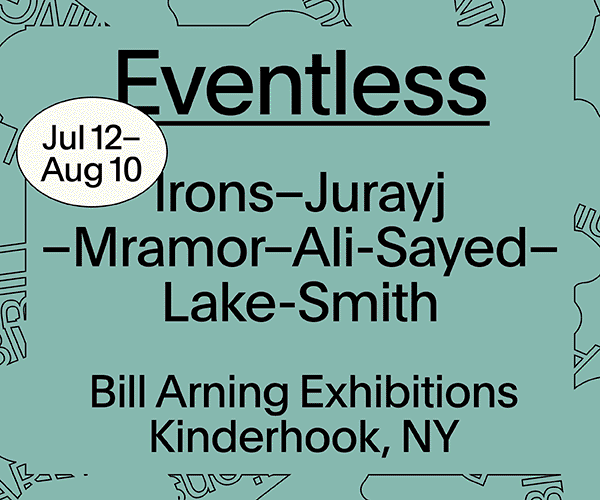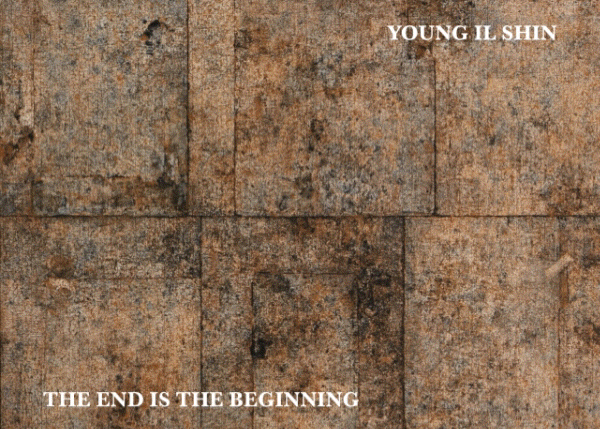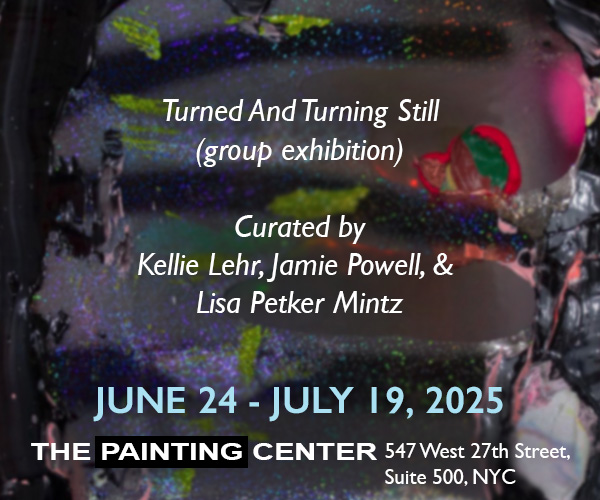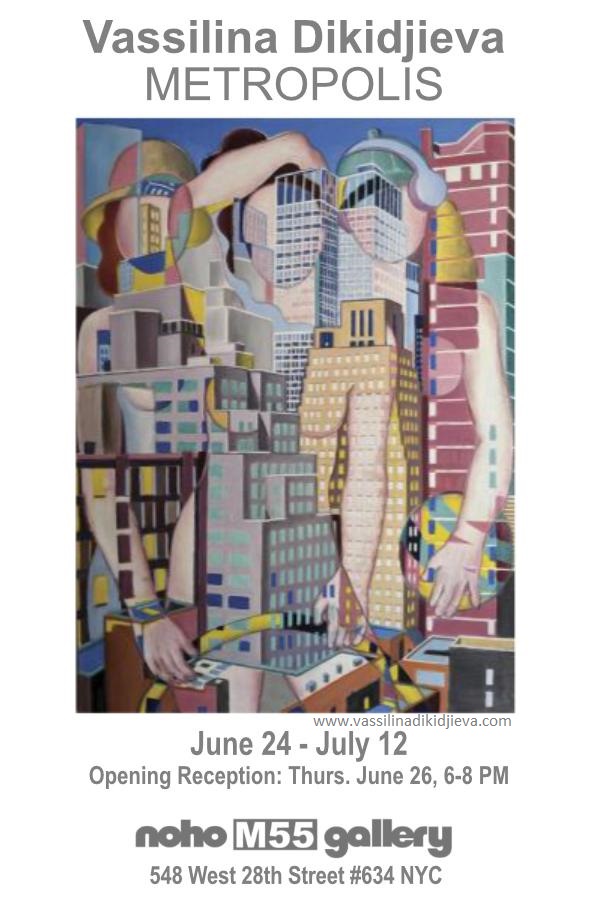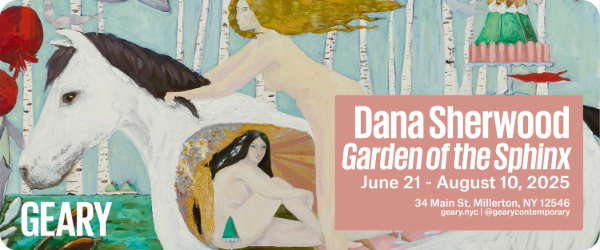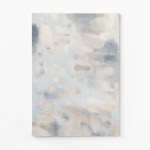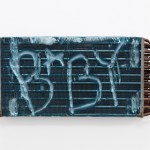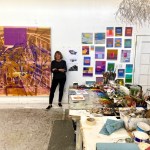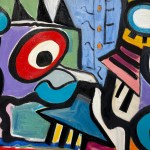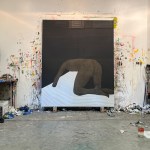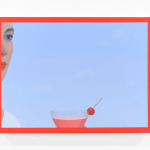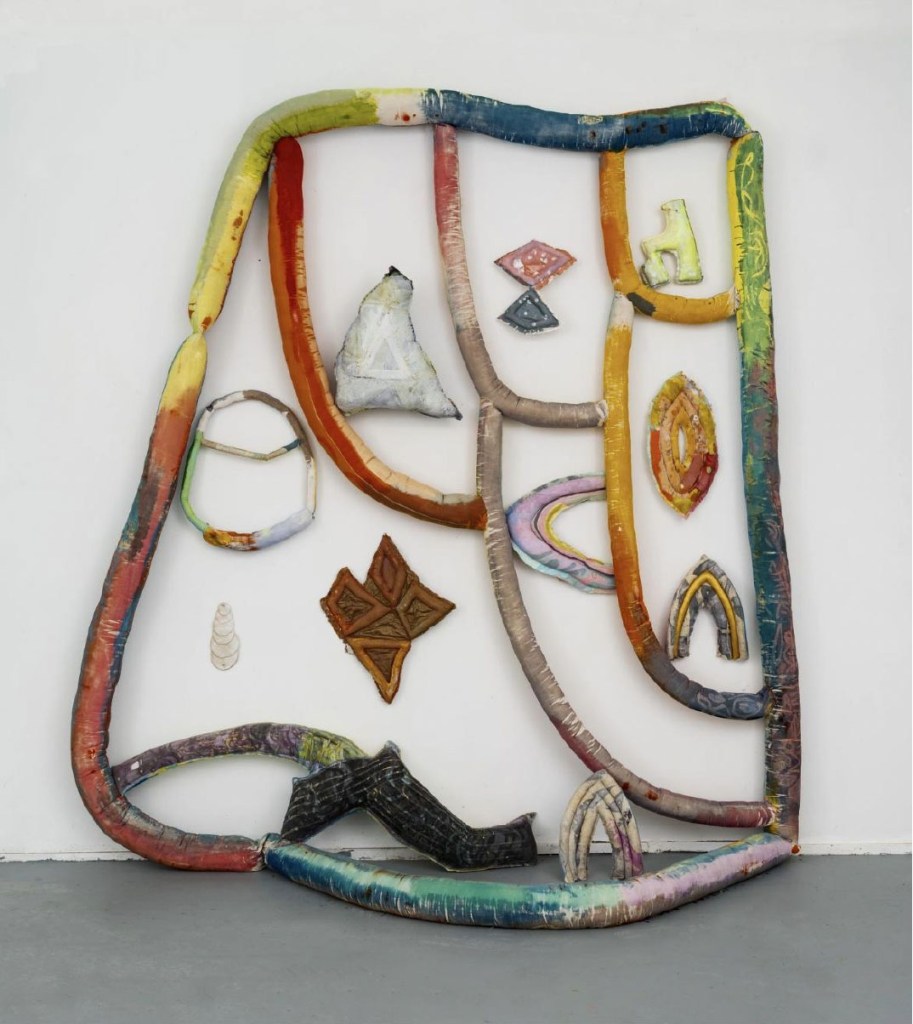
Contributed by Ben Godward / Meg Lipke and Jeff Williams seem to dance through the fledgling Roundabouts Now Gallery – once a medical office conference room in an industrial park – in Kingston, New York. The central collaboration comprises a large sewn and stuffed canvas with ruin-like drawings enveloping three deliciously odd sculptural objects. This union casts a pervasive spell. Pushing the interior accretion forms further into the unreal are surfaces that appear to be made of dust or remnants of ashes. Spectral in their essence but protected in the upholstered pool, they look as if they could dissolve into a pile if touched.
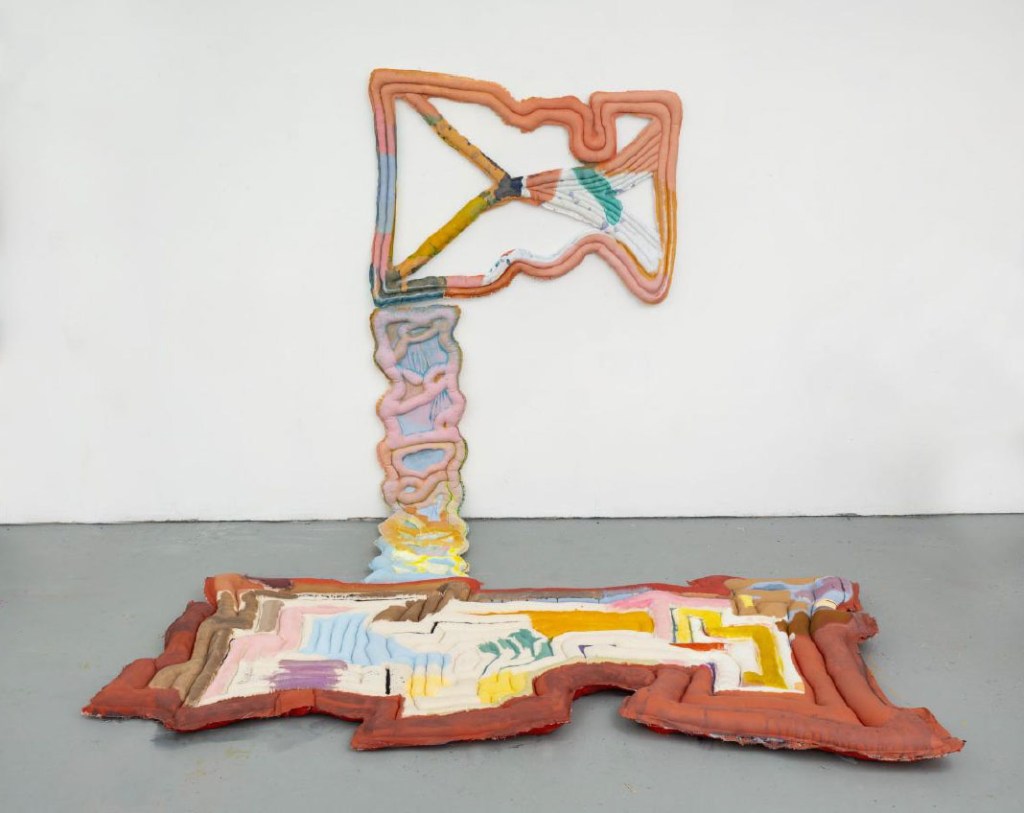
acrylic, dye, pigment on canvas and muslin. Dimensions variable 85 x 113 x 85 inches (Photo: Brad Farwell)
Lipke’s other work here is big and ambitious. Its intensity of form and color seems to have reached a new level, radiating a refreshing and vital sense of experimentation and joy-in-the-weirdness. Archeology of a Funerary Site, incorporating an adult female form, is a 12-foot masterpiece of soft framework that organically organizes the space, occupying the whole wall from ceiling to floor and holding it open like a portal. From another angle, Receiving Information from Deep Time forms a soft rectangle on the wall connected to the floor by a pale, languid umbilical strand, orchestrating a scale change that makes the space seem larger than it is. The two pieces titled After Bruniquel (small) and After Bruniquel (large) are notably precise, clean, and reserved, their repetition indicating a very deliberate process. Her gestures are not random, and her mark-making and color signify a search, bringing to mind Joan Mitchell.
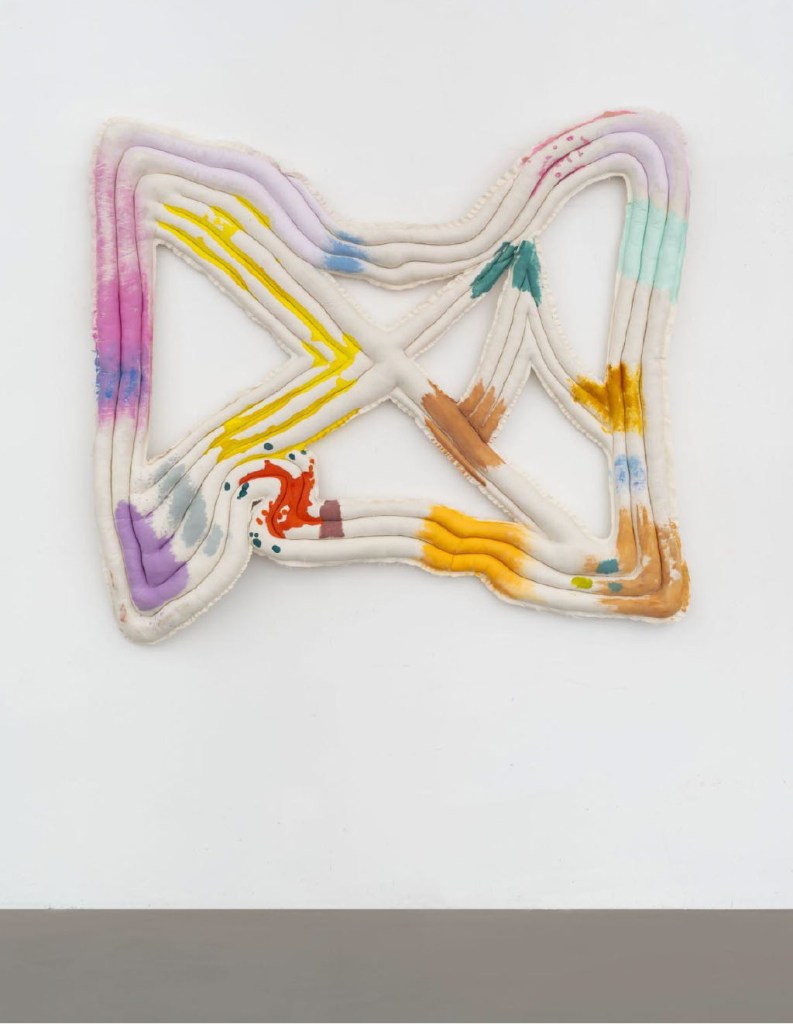
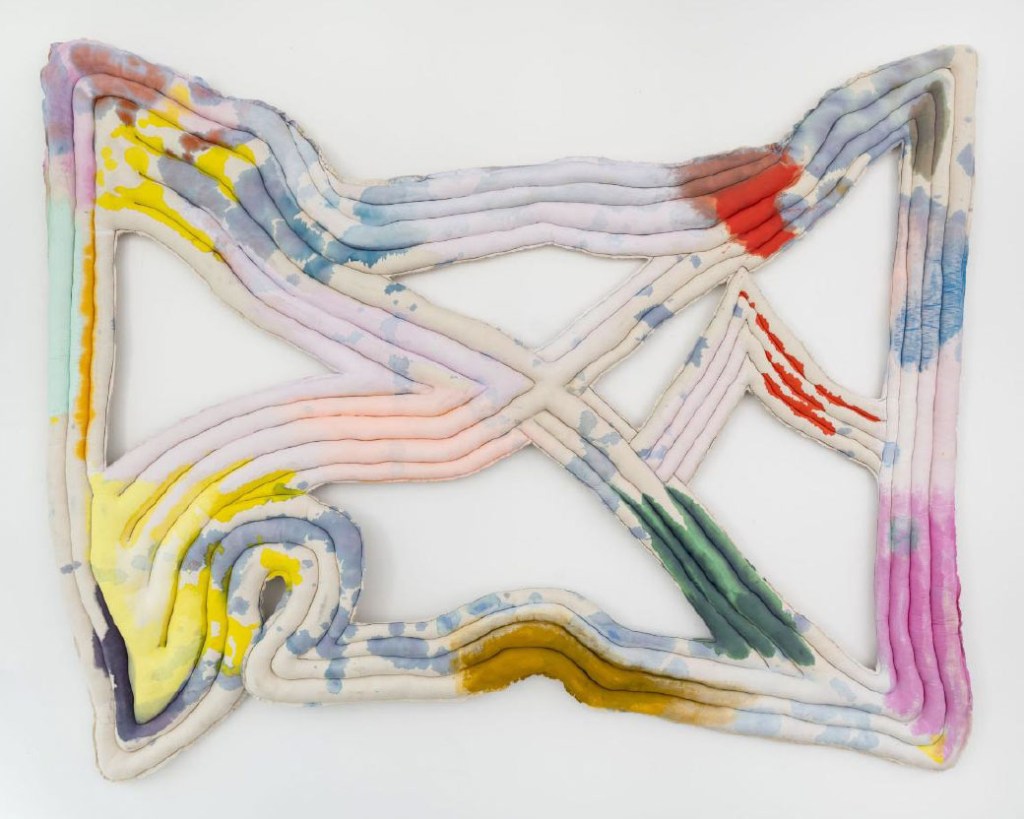
Jeff Williams’ mostly aluminum sculptures ideally complement Lipke’s colorful constructs. Stalactites hang finger-trapped to the abandoned grid of the drop ceiling, cluing us to the possibility that we are looking at relics of our own time. In Hidden Pockets, pierced and severed segments of extruded tubing dangle as other forms cling to them desperately with tack welds. The overall effect is that of a treacherous cliff. On one ledge is a scrap of honeycombed aluminum filled with cast aluminum, recording a high-temperature battle between different forms of the same element. In a frisson of curation, Trash the Gardens – a cast, joined, and polished relic with its underseam exposed, rising like a furtive viper with jagged sawcut edges from a crumpled base to dangle a metal cluster at eye level – separates Lipke’s After Bruniquel pieces. It serves as an emphatic comma between the two quietest pieces in the show.
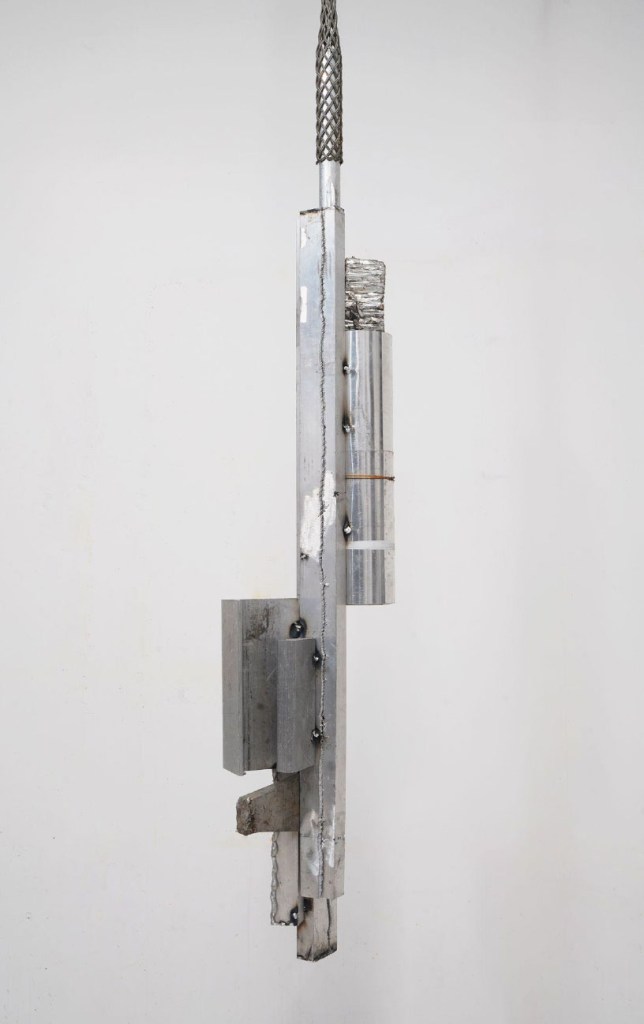
5 x 14 x 106 inches (Photo: Brad Farwell)
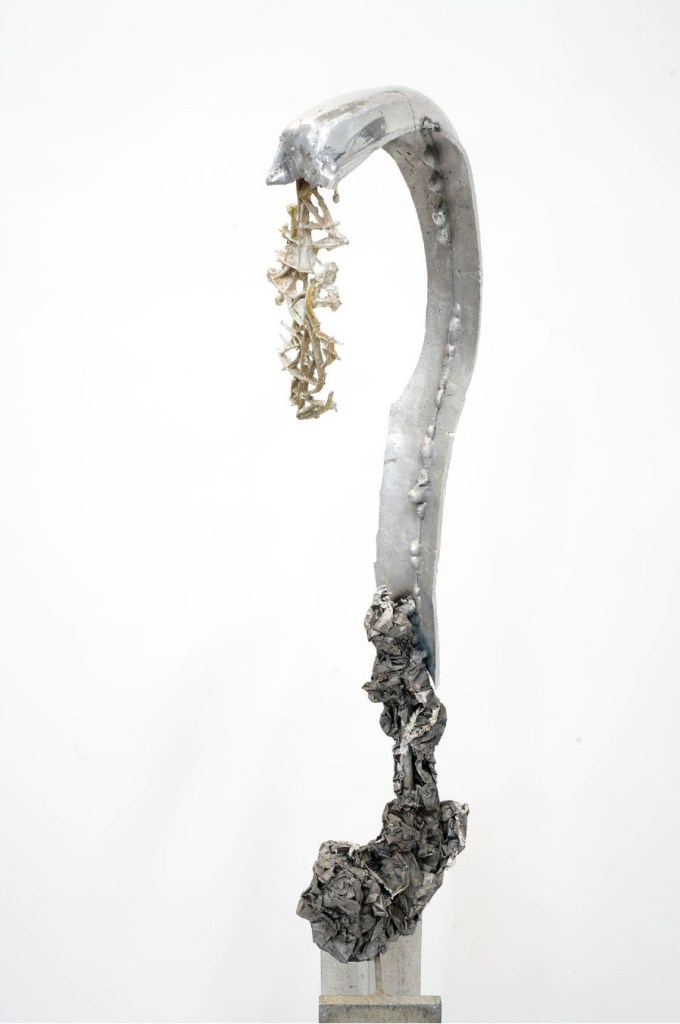
7 x 16 x 66 inches (Photo: Brad Farwell)
A liquefier creates liquids from gases, the opposite of sublimation. Analogously, Lipke and Williams make the spirits of the past tangible. There are no perfect or sublime forms here, yet the show enchants. The magic of art isn’t always a disappearing act. Lipke and Willams boldly prove the point.
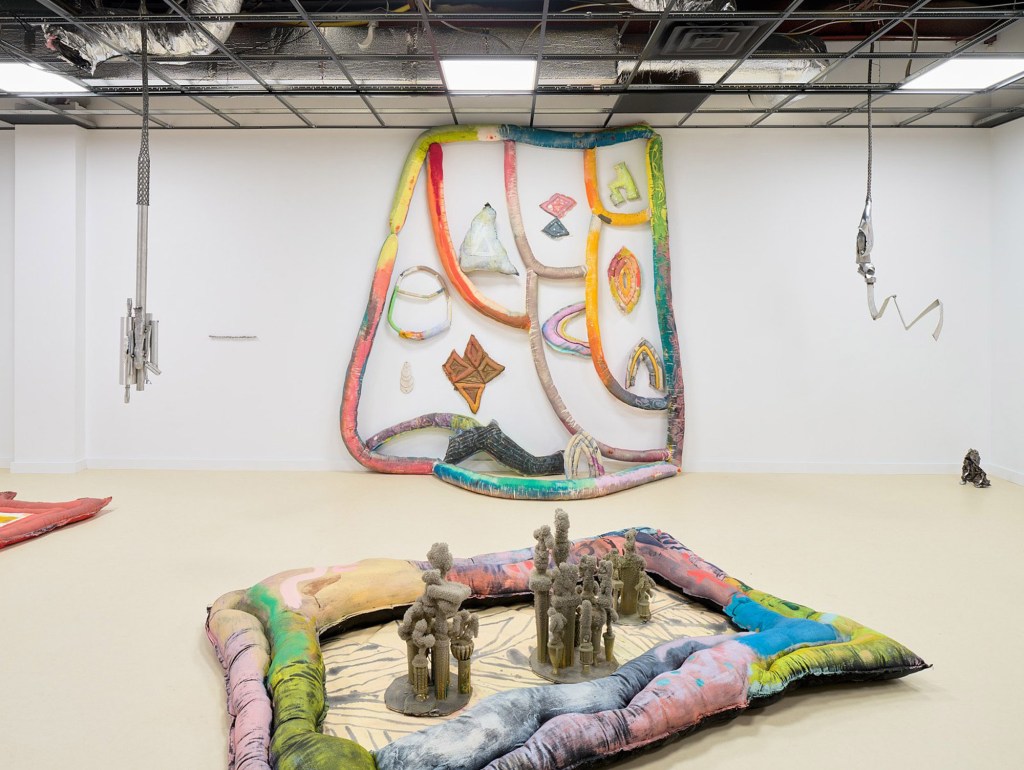
“Meg Lipke and Jeff Williams: Liquefier,” Roundabouts Now Gallery, 25 Barbarossa Lane, Kingston, NY. Through June 29, 2025.
About the author: Ben Godward is a Brooklyn-based sculptor.

